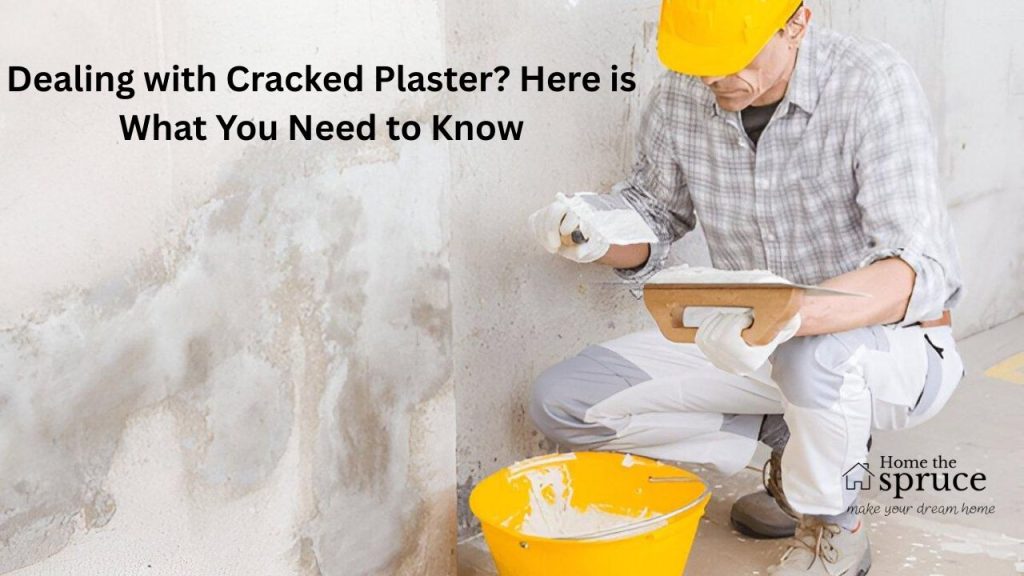Did you ever observe cracks in your ceiling or plaster walls? You are not alone. Cracks in plaster are usual in most houses, and though some of them are harmless, others indicate more significant issues.

If you are asking yourself if you should be concerned about those cracks or how to repair them, this blog will assist. We will discuss why plaster cracks occur, when they require immediate repair, and why the best solution is to hire a professional plasterer to repair them.
Why Does Plaster Crack?
Plaster is tough, but it is not indestructible. Cracks will eventually appear over time for various reasons.
1. The House is Settling: Every house moves slightly over time. When the foundation settles, tiny cracks will appear in the plaster, particularly around doors and windows. These are not generally a significant issue, but you should monitor them nonetheless.
2. Weather Changes: Plaster moves when warm and contracts when cold. Melbourne’s weather changes suddenly, and this movement weakens the plaster, leading to cracks.
3. Water Damage: Roof leaks, pipe leaks, or even condensation can penetrate into your ceilings and walls. This softens the plaster and causes cracks. If you notice brown spots around the cracks, water damage is likely the culprit.
4. Shoddy Workmanship: If the plaster was not done well when your house was constructed or remodeled, cracks can show up much earlier. Low-quality materials or sloppy work tend to result in poor plaster that does not last long.
5. Structural Issues: Larger cracks that continue to develop or occur in a zigzag shape may indicate there is a critical problem with the structure of your home. If you observe these, it is advisable to contact a professional.
Types of Plaster Cracks and What They Mean
All cracks are not equal. Some are merely superficial, while some may spell more serious trouble.
- Hairline Cracks: They are very narrow, spiderweb-like cracks that tend to appear due to small settling or drying problems. They are not normally significant, but if they expand, they may require repair.
- Diagonal or Stair-Step Cracks: These may indicate that the foundation of your house is moving. If the cracks are wider than a few millimetres, they should be investigated.
- Big Vertical or Horizontal Cracks: These can be due to structural movement or a forceful hit. These are not cracks you should ignore.
- Ceiling Cracks: When you notice cracks in your ceiling, particularly if they are spanning the entire length of the room, your plaster may be sagging or have been affected by water damage. These require prompt attention.
Can You Fix Cracked Plaster Yourself?
For tiny hairline cracks you might be able to fix them with a DIY repair using some filler and some sanding. But for larger cracks, recurring cracks, or damage to the ceiling, do-it-yourself repairs won’t hold up.
The following is when you should hire a professional to repair plaster:
- The cracks recur, regardless of how many times you fill them.
- The cracks are more than 3 millimeters wide.
- You see sagging or soft areas in your ceiling.
- The cracks appear with water stains or peeling paint.
A temporary fix may work to make it look better in the short term, but if there is an underlying issue, it will just re-crack.
Why It Is Worth Hiring a Professional for Plaster Repair
Having your plaster professionally repaired is not only about keeping your walls looking nice—it’s about ensuring that the issue will not come back.
Here’s why it is sensible to use a professional:
- They know what to look for – A plastering professional is able to see whether the cracks are cosmetic or indicative of an underlying problem.
- Improved results – No patchy or uneven repairs. A professional job will perfectly match.
- Safety first – Ceiling crack repairs are hazardous. Professionals have the appropriate tools and know-how to perform the job safely.
- Time savings – A professional job is faster and neater than fighting with homemade repairs.
If you need Melbourne plaster repair, ensure that you hire a local, reliable plasterer who is familiar with the homes and conditions in Melbourne.
How to Stop Plaster Cracks from Coming Back
Though you cannot prevent your house from settling, you can take a couple of measures to maintain your plaster in a good state:
- Regulate humidity levels – Use a dehumidifier in wet areas to prevent moisture accumulation.
- Seal leaks promptly – One of the primary reasons for plaster cracks is water damage.
- Employ quality materials – When you are doing the renovation, ensure you are working with good-quality plaster and proper techniques.
- Do routine inspections – If you see tiny cracks developing, have them repaired early before they become larger issues.
Final Thoughts: Do Not Ignore Those Cracks
Plaster cracks may look insignificant, but if you just ignore them, they can contribute to larger issues, further damage, and expensive repairs. Whatever it is, whether it’s a minor wall crack repair or a large ceiling crack repair, having it repaired as soon as possible is always the best way to go.
If you are looking for plaster repair in Melbourne, opt for experienced professionals who can identify the issue correctly and provide you with a permanent solution.
Got plaster cracks that require repairing? Do not delay until they become worse; contact a reliable plastering specialist today.












